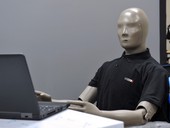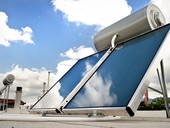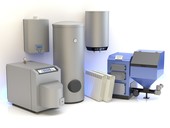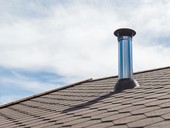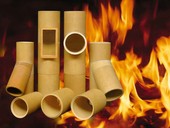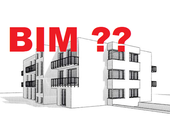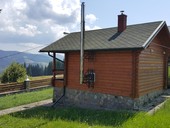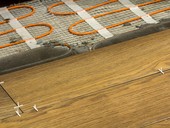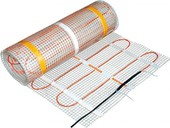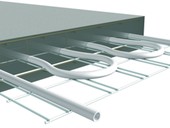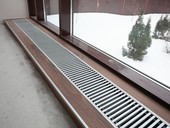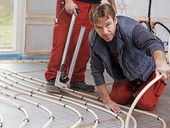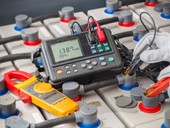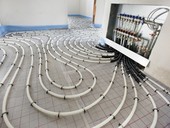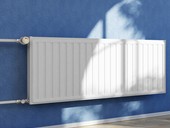Controllers for indoor heating control currently only work with the air temperature that is a controlled variable. At the same time, the main purpose of regulation is to achieve and maintain thermal comfort, which is dependent on more parameters than just the air temperature. The article presents a newly developed virtual air temperature function for heating controllers, which allows heating to be controlled not only by air temperature, but by more standards of thermal comfort. The contribution deals with the description of the principle of the controller function with virtual temperature and brings the evaluation of its benefits and weaknesses.
Archiv článků od 3.6.2019 do 16.9.2019
The paper deals with simulation analysis of solar system for domestic hot water preparation for apartment building. The analysis shows the influence of climatic conditions on solar system gains. The aim is to verify whether the level of solar gains can be guaranteed in the Czech Republic's climatic conditions. In discussions over the efforts to guarantee the benefits of a designed and installed solar system, another question arises as to how the total solar radiation changes year-on-year and whether its annual fluctuations can be simply passed on to the solar system's profit.
The authors answer the question how to choose a heat source for a family house built with respect to the current thermal technical requirements. An example is new building of a two-storey family house approximately 20 km south of Brno with a residential part of the house with a square plan of 11 × 11 meters. The evaluation results are compared according to five different criteria.
Ceramic chimney pipes for chimney systems are a traditional and desirable material, mainly due to their high heat and corrosion resistance. In order to reduce CO2 emissions, ie to achieve higher fuel utilization and lower heating costs, but also to reduce CO and dust emissions, ie to increase the purity of flue gas, new boilers for the combustion of solid, liquid and gaseous fuels with higher efficiency. These boilers also use the latent heat of the flue gas and condensate forms in the chimney system. Therefore, higher demands are placed on chimney systems, for resistance to moisture, condensate, but also to reduced gas permeability, which is required for energy passive houses.
The article deals with BIM technology in co-operation with design of HVAC. The theme is divided into two related parts. The first part describes the complex issues related to BIM technology and its implementation in TZB practice. In the second part there is a practical way of comparing the calculation of heat losses according to CSN EN and using the BIM tool.
This section, focusing on the types and characteristics of cables and general information on the issue of electric underfloor heating, closes the series of articles, which showed the basic possibilities that underfloor heating, possibly cooling, offers, what elements it consists of, how it is installed. Those interested in more detailed information can use a number of sources both on TZB-info and on the basis of system suppliers of complete sets of elements, using their free advice, in some cases also free software tools for projection. It is necessary to emphasize at the end that even the best project can be wrongly done by installation, replacement of elements etc.
This section and the remaining two parts of the underfloor heating series are dedicated to a method that has also been used for many years, namely direct conversion of electrical energy into heat in the floor. Also, underfloor heating technology is well processed by component manufacturers and suppliers. Many assembly companies are currently operating in this area, and it is not unusual for builders to install them under the supervision of an expert and self-help. A considerable number of supporters are interested in direct use of electric power for floor heating, especially thanks to the easy and very precise regulation and low purchase costs. This type of underfloor heating does not allow cooling.
The study deals with the measurement of microclimatic (indoor climatic) parameters and questionnaire survey in open-space offices. It describes the building, the air conditioning system and the parameters that have been assessed in the space. The paper shows the problems associated with the assessment of the thermal-humidity microclimate according to the subjective feelings of the occupants. It is an introductory work to the analysis of objective and subjective assessment in the space with uneven thermal-humidity microclimate.
Zone regulation is one of many ways to reduce heating costs. But is this method effective? And how effective is it? Is it worth investing in zone regulation? This paper presents lessons learned from the long-term monitoring of the cost of heating a particular apartment building and compares the impact of different investments on reducing energy consumption. It also deals with the practical operation of zone regulation and the possibilities of using remote access to both its control and the data that zone regulation can provide.
The paper deals with the problem of optimal sizing of battery-powered hybrid power systems for HV extraction installations, where electricity consumption diagrams are available and it can be assumed that the nature of the operation will not change when photovoltaic technology is installed with battery storage. This is a difficult task, as each installation is specific to its nature of consumption, energy prices, location and investor requirements. The article outlines how to solve this problem by using the numerical optimization methods implemented in MicrOpt Design, the use of which is shown in a specific example.
The paper assesses, based on numerical simulations, the variant placement of the radiator in a heated corner room with two windows. Unlike in the past times, when the installation of a radiator under each window was recommended in such a room, interesting conclusions are reached when taking into consideration the current recommended thermo-technical properties of the building structures.
zpět na aktuální články
